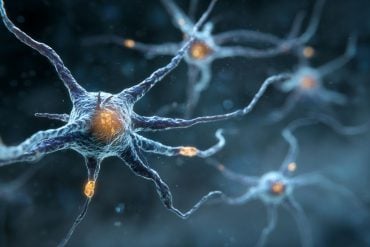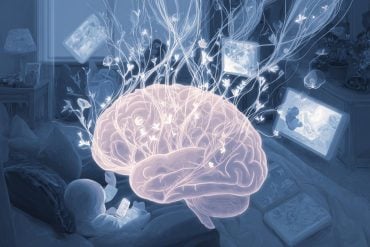Summary: Our bodies process food differently depending on the time of day, and eating later has been linked to poorer metabolic health. A study of twins found that those who consumed most of their daily calories earlier had better insulin sensitivity and lower risk factors for diabetes and obesity.
However, researchers also found that up to 60% of eating time preferences are influenced by genetics, making it harder for some people to adjust. The findings suggest that personalized nutrition should consider both circadian rhythms and genetic predisposition.
Key Facts:
- Eating earlier in your biological day improves insulin sensitivity and lowers diabetes risk.
- Genes account for up to 60% of when individuals prefer to eat during the day.
- Personalized nutrition strategies should factor in circadian rhythms and genetic differences.
Source: DZD
Our metabolic processes differ depending on the time of day and many of them are more active in the morning than in the evening.
Although studies show that eating late in the day is associated with an increased risk of obesity and cardiovascular diseases, little is known about how the time when we eat affects glucose metabolism and to what extent this is genetically defined.

Prof. Olga Ramich from the German Institute of Human Nutrition Potsdam-Rehbrücke (DIfE) and her team recently investigated this in a twin cohort.
The article was published in the journal “eBioMedicine.”
Metabolism follows the internal clock
The circadian system is a hierarchically structured 24-hour time control system in the body that regulates behavior and metabolism via a central clock in the brain and peripheral clocks in organs such as the liver or pancreas.
As a result, our metabolic processes differ depending on the time when we eat, which leads to diurnal fluctuations in glucose metabolism and the release of hormones after a meal. Food intake itself acts as an important timer that synchronizes our internal clocks.
Decoupling meal times from the natural light-dark rhythm, e.g. when working at night, can lead to an internal clock disorder and negative metabolic changes.
Does late eating make you ill?
Previous studies have shown that eating late at night is associated with an increased risk of obesity and cardiovascular diseases.
However, little is known about how exactly the timing of food intake interacts with the individual circadian rhythm and thus influences glucose metabolism and the risk of diabetes. It is also unclear which mechanisms determine one’s individual eating behavior, as it depends on the interaction of cultural, personal, physiological and genetic factors.
Against this background, Olga Ramich, Heisenberg Professor at the Charité – Universitätsmedizin Berlin and at the DIfE, has investigated how the timing of food intake during the day is associated with glucose metabolism and insulin sensitivity.
Ramich, who also conducts research at the German Center for Diabetes Research (DZD), and her team wanted to find out the genetic and environmental parameters that affect individual eating habits.
Twins provide information
They used data from the NUtriGenomics Analysis in Twins (NUGAT) study, with the participants being 46 identical and fraternal twin pairs without diabetes. The test subjects kept a food diary of the times and quantities they ate for five days.
The scientists determined the individual sleep-wake rhythm (chronotype) of the participants and carried out various metabolic tests, such as a blood glucose load test.
Furthermore, they also determined the circadian timing of eating, i.e., when someone eats during the day, in comparison to their individual biological circadian rhythm rather than the specific time of the day.
Eating earlier promotes a healthy metabolism
An important parameter that the scientists determined was the circadian caloric midpoint (CCM) of the test subjects. The CCM describes the time point in the day at which 50% of daily calories are consumed. A later CCM therefore means that someone eats mainly later in the day – in relation to the individual chronotype.
“People who ate their main calories earlier in the day had better insulin sensitivity,” explains Ramich, who heads the Department of Molecular Metabolism and Precision Nutrition at the DIfE.
“On the other hand, subjects who consumed their main calories late in the day showed poorer insulin sensitivity, which is associated with a higher risk of type 2 diabetes.”
In addition, they had a higher body mass index and a larger waist circumference.
The influence of genes on eating times
To investigate the influence of genes on eating times, the researchers compared the eating behavior of identical twins (100 percent identical genes) with that of fraternal twins (approx. 50 percent identical genes).
Using special mathematical models, they were able to estimate the extent to which the timing of eating can be attributed to genes, shared environment or individual experiences.
The study shows that various parameters of the daily eating pattern are affected by our genes by up to 60 percent.
Conclusion: Personalized nutrition needs new approaches
Shifting the main calorie intake to earlier circadian times might improve glucose metabolism and protect against type 2 diabetes and obesity.
“However, as eating times are partly hereditary, some people may find it difficult to change their habits,” Ramich points out.
“Further validation studies and clinical trials are needed to better understand the effectiveness of mealtime-based interventions.”
Circadian Timing of Eating
When someone eats during the course of a day in relation to the individual biological daily rhythm is measured as the interval between mealtime and the midpoint of sleep.
The midpoint of sleep describes the time that lies exactly in the middle between falling asleep and waking up. It is a measure of the chronotype – in other words, whether someone is an early riser or a night owl.
NUtriGenomics Analysis in Twins (NUGAT) Study
The NUGAT study, initiated and designed by Prof. Andreas F. H. Pfeiffer, was conducted from 2009 to 2010 at the German Institute of Human Nutrition Potsdam-Rehbrücke (DIfE). The identical and fraternal twin pairs were recruited either from a twin register (HealthTwiSt, Berlin, Germany) or via public advertisements.
The 92 participants (46 pairs of twins) underwent two nutritional interventions, which were not relevant to the study results shown here though.
The participants underwent detailed metabolic phenotyping, which included a physical examination, medical history, anthropometric measurements and a glucose tolerance test.
The individual chronotype was determined by means of a questionnaire. In addition, all 92 test subjects filled out handwritten food logs in which they noted the start and end of each meal as well as the amount and type of food consumed on five consecutive days. This included three working days and two days off to reflect the eating habits of the twin pairs.
About this genetics and circadian rhythm research news
Author: Public relations DIfE
Source: DZD
Contact: Public relations DIfE – DZD
Image: The image is credited to Neuroscience News
Original Research: Open access.
“Later eating timing in relation to an individual internal clock is associated with lower insulin sensitivity and affected by genetic factors” by Olga Ramich et al. eBioMedicine
Abstract
Later eating timing in relation to an individual internal clock is associated with lower insulin sensitivity and affected by genetic factors
Background
Although the contribution of the circadian clock to metabolic regulation is widely recognized, the role of eating timing in glucose metabolism and diabetes risk remains insufficiently studied. This study aimed (i) to investigate the link between the eating timing pattern relative to individual clock and glucose homoeostasis and (ii) to explore the contribution of genetic and environmental factors to eating timing parameters.
Methods
In 92 adult twins (NCT01631123), glycaemic traits were assessed using the oral glucose tolerance test. Parameters of eating timing pattern (eating timing itself, daily calorie distribution, and eating frequency) were extracted from five-day food records. Caloric midpoint defined as the time point at which 50% of daily calories are consumed.
Circadian timing of eating was determined as a time interval between the clock time of eating and a corrected midpoint of sleep, a chronotype marker. Heritability of eating timing components was estimated by comparing correlations within monozygotic and dizygotic twin pairs and fitting genetic structural equation models.
Findings
Among components of eating timing, the most associations were found for the circadian time of caloric midpoint (CCM). Later CCM was significantly associated with poorer insulin sensitivity, i.e. with lower ISI Stumvoll (β = 0.304, p = 5.9 × 10−4) and higher HOMA-IR (β = −0.258, p = 0.011) indices, as well as with higher fasting insulin levels (β = −0.259, p = 0.013), even after the model adjustment for sex, age, daily energy intake, and sleep duration. Later CCM also demonstrated robust associations with higher BMI and waist circumference. All eating timing components showed high or moderate heritability and were strongly related to individual sleep timing.
Interpretation
Later eating timing in relation to an individual internal clock is associated with lower insulin sensitivity. Shifting the main calorie intake to earlier circadian times may improve glucose metabolism, but genetic factors could influence the feasibility and effectiveness of eating-timing based interventions. The findings should be investigated in a larger cohort.
Funding
This work was supported by the German Research Foundation (DFG RA 3340/4-1 to OP-R, project number 530918029), by the European Association for the Study of Diabetes (Morgagni Prize 2020 to OP-R), and by the German Federal Ministry of Education and Research (BMBF NUGAT 0315424 to AFHP). The DZD is funded by the German Federal Ministry for Education and Research (01GI0925).






